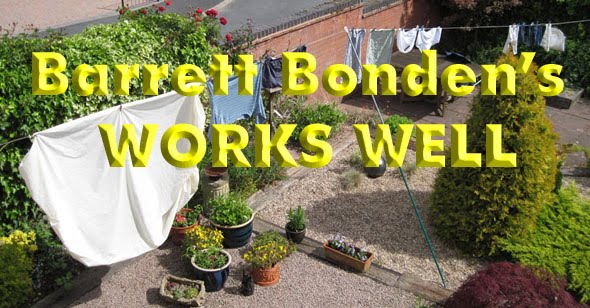 Looking for modernity in simple hand tools is usually a chimera. It’s not coincidental that 100-year-old shapes have lasted. I once bought a claw hammer moulded from a single piece of silvery metal. Just two faults: the face of the hammer head was too small, and because the claw wasn’t up to the task of extracting nails one of the tines(?) broke off. Pincers are better for small/medium nails, a crowbar for the bigger ones.
Looking for modernity in simple hand tools is usually a chimera. It’s not coincidental that 100-year-old shapes have lasted. I once bought a claw hammer moulded from a single piece of silvery metal. Just two faults: the face of the hammer head was too small, and because the claw wasn’t up to the task of extracting nails one of the tines(?) broke off. Pincers are better for small/medium nails, a crowbar for the bigger ones.This I believe is a ball peen hammer but how many of us ever use the ball peen bit? As far as I know its primary function is for hammering out dints in sheet metal, a job which is beyond anyone who has not trained as a panel beater. I met a professional panel beater in the RAF and in talking about his craft he mentioned another of his tools as a planishing hammer. I found that adjective mysteriously engaging.
My first landlord in the USA was a great DIY man and he gave me a short-handled ball peen hammer which accompanied me back to the UK and which I used for many years. In an incredible double coincidence I met my ex-landlord on a press trip to Venezuela and discovered he was a journalist. He remembered the hammer.
I’ve never entirely mastered the technique of ensuring 100 per cent security when attaching the hammer head to a new shaft but this one has stayed on for some time now. Perhaps because my hammering days are mainly in the past. I love the subtly shaped shaft and the smoothness of the wood.


3 comments:
I agree and empathise with your thoughts on the old fashioned nature of this tool - I have one that is similar but I regard a hammer as a tool of last resort. Wherever possible I use screws rather than than nails. Firstly it makes the work much more accurate, and secondly it allows for easy deconstruction if the need arises, which overcomes your problem of nail extraction. A prime example is in the fitting of skirting boards. Removal of those that were fitted by traditional building methods usually leads to a replastering job.
Another plus for screws: avoidance of bludgeoned thumb.
The ball pene hammer is a blacksmith's main tool. The ball is especially useful for rounding rivets when joining metals. (No really self-respecting blacksmith would use electric welding for such jobs). The expert can produce a rounded head similar to the already formed head at the other end of the rivet by judicious angling of the ball whilst striking.
As to rightfulness for the job - Roman tools excavated at Vindolanda have the same shape as those in use today (although today's metals will be steel rather than wrought iron).
A good simple example of "Works well, looks right". Like the Spitfire but slightly cheaper.
Post a Comment